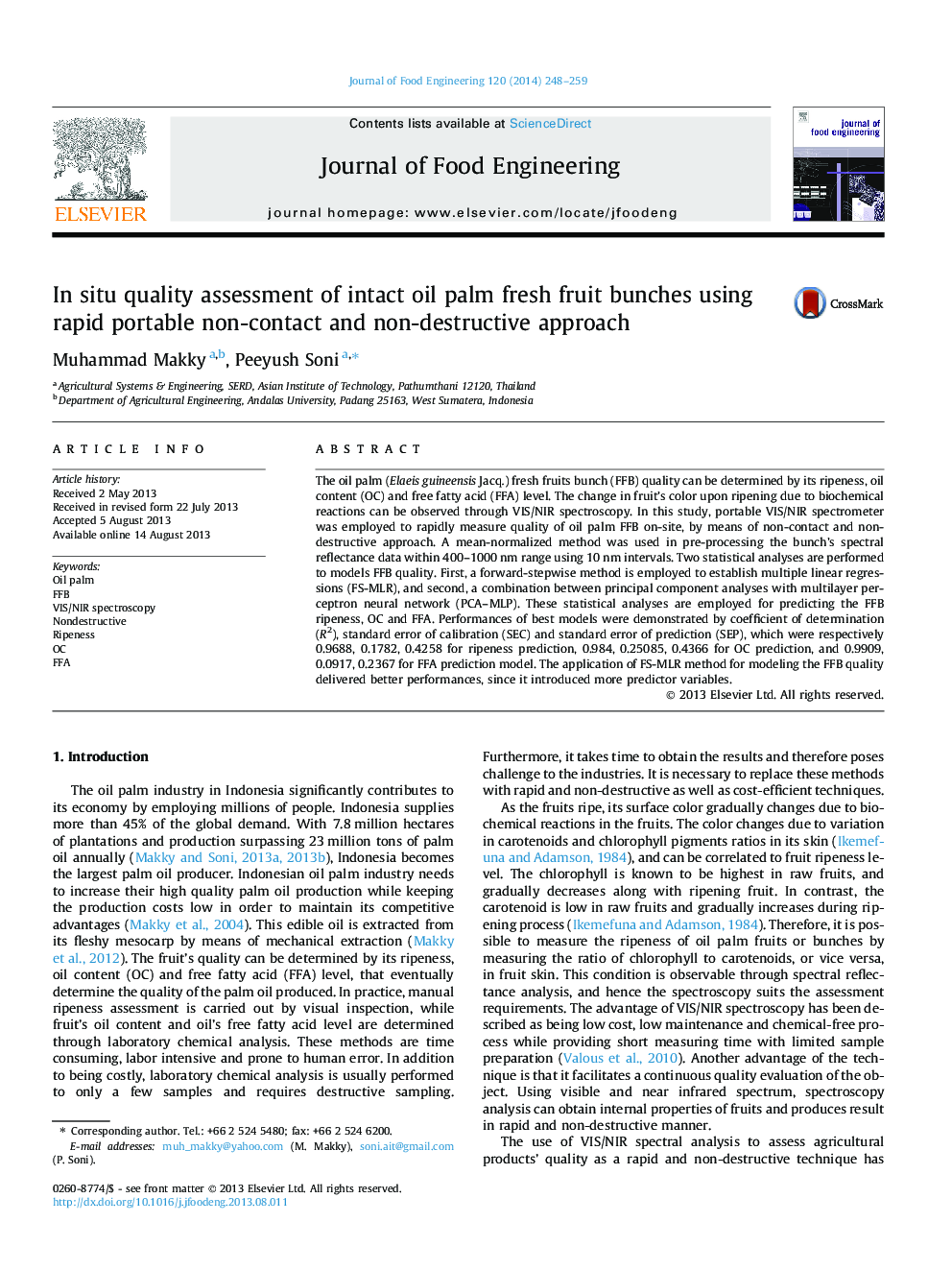| کد مقاله | کد نشریه | سال انتشار | مقاله انگلیسی | نسخه تمام متن |
|---|---|---|---|---|
| 223332 | 464351 | 2014 | 12 صفحه PDF | دانلود رایگان |
• Rapid and non-destructive examination for oil palm FFB quality inspection.
• VIS/NIR spectroscopy for field application.
• The best models accuracy was 96.88% for ripeness prediction, 98.4% for oil content prediction, and 99.1% for free fatty acid prediction.
The oil palm (Elaeis guineensis Jacq.) fresh fruits bunch (FFB) quality can be determined by its ripeness, oil content (OC) and free fatty acid (FFA) level. The change in fruit’s color upon ripening due to biochemical reactions can be observed through VIS/NIR spectroscopy. In this study, portable VIS/NIR spectrometer was employed to rapidly measure quality of oil palm FFB on-site, by means of non-contact and non-destructive approach. A mean-normalized method was used in pre-processing the bunch’s spectral reflectance data within 400–1000 nm range using 10 nm intervals. Two statistical analyses are performed to models FFB quality. First, a forward-stepwise method is employed to establish multiple linear regressions (FS-MLR), and second, a combination between principal component analyses with multilayer perceptron neural network (PCA–MLP). These statistical analyses are employed for predicting the FFB ripeness, OC and FFA. Performances of best models were demonstrated by coefficient of determination (R2), standard error of calibration (SEC) and standard error of prediction (SEP), which were respectively 0.9688, 0.1782, 0.4258 for ripeness prediction, 0.984, 0.25085, 0.4366 for OC prediction, and 0.9909, 0.0917, 0.2367 for FFA prediction model. The application of FS-MLR method for modeling the FFB quality delivered better performances, since it introduced more predictor variables.
Journal: Journal of Food Engineering - Volume 120, January 2014, Pages 248–259
